Vienna
-
The Water Nymphs

Two ladies at The Albertina came and said hi to me. They were all wet as if they just came out of the water. Their faces were diabolically beautiful and they had long hair that touched the floor. Their long hair was decorated with some kind of white fluffy algae. Behind them were two long trails of water that ran down their long hair. That’s pretty much all that I can sum about them because if they have a body each, I could describe more.
“Welcome to The Albertina,” both of them greeted me while smiling. “How do you like the museum?” they added.
“It’s great! I am loving the fact that I could see Joan Miró, Marc Chagall, Picasso, Edgar Degas, Paul Cezanne, Albrecht Durer, and many more here! ” I told them excitedly. I had visited a few other museums previously but none of the visitors ever try to make any sort of conversation with me. Well, neither do I but I was glad that at least here people were making effort to start a conversation.
“Das ist lieb! How about we invite you to visit our realm? Are you up to it?” they babel simultaneously. At first, I was reluctant but since I was alone and not rushing anywhere, I guessed I didn’t have any reason not to follow them. I said yes.
We walked; I mean I walked –they floated– until we reached a big frame with a gold-coated wooden border. There was a realm of water inside; gleam and mossy. I went near the frame to get the sense of the height; it was more or less my tall.
“Climb through,” they directed. I climbed after them and immediately soaked in water and once in there, I immediately became like them; I was disembodied. Breathing got easier. My face turned flawlessly pale but my vision became very clear. My thinning hair grew longer and white fluffy algae immediately came swimming towards me and giggled before finding their spots to sleep in-between my hair strands. After a while, they were all over my hair sleeping soundly.
Two men appeared in front of the frame. I startled and froze, so does the two ladies. The men were admiring us three until one of them who looked puzzled questioned my presence there, “aren’t there suppose to be only two nymphs?” The other man nodded and then scratched his head and touched the frame to see if it was real.
Beep! Beep! Beep! The security alarm went off.
The last thing I heard was the sound of marching boots. It subsided as I slowly froze.
Painting: The Water Nymphs (1899) by Gustav Klimt.
-
A bookmark named Rain
It was raining that morning. I contemplated whether should I stay in bed or should I just head out for coffee. I opted for the former as rain and I cannot get along very well. I stayed in bed for a little bit more and tried to write in my journal about the visit to a few art museums the day before. But I was all miserable, I could not write anything as the coffee smell lingered about. It was not like the next room occupant was making coffee, it was all in my brain. I cannot do anything without having a coffee first. It is a ritual and I am religious about it.
I got out of bed, put on my jeans, sweater and hooded coat, and walked to Aïda Cafe. In the rain. It had been my go-to cafe since the day I arrived in Vienna. I ordered a black coffee and a croissant and sat by the glass window, looking out to the rain and people walking about doing their thing. Some were running as fast as they could trying to cheat rain, some strolling happily in their colourful wellies with umbrellas on their hands. Some were just like me, all hooded, hands in pocket, and walking without care.
I looked up the sky looking for a sign if the rain might stop anytime soon as I had plans to go to other art museums. I was trailing Klimt’s works and every day was precious to me as I was looking forward to seeing his works up-close; to be mesmerised, to be inspired. But the rain showed no sign of stopping. I sipped my coffee and looked out again, this time, down. There I saw few red maple leaves lying on the ground; their crisp brown leafy body soaked in the rain. A particular leaf caught my attention as I heard it calling out to me.
“Please help me. My petiole is stuck under this chair and it’s hurting me,” I heard the leaf was saying. I raised my hand and showed it the wait sign. I could not talk loudly as people would think I’m crazy. I finished my coffee and croissant quickly and walked out. “Danke Schoen!” I said to the waitress while waving. “Bitte,” she said waving back.
I quickly went to help the leaf. I pulled the chair up and picked up the leaf. “There you are,” I said to it.
“Thank you, you saved me!” it screamed with joy. Almost crying.I wrapped it in the serviette that I got from the cafe, and put it in my pocket carefully so that I would not crumple it. I walked back to the hotel and took it out of my pocket. I wiped it dry and laid it on the table under the table lamp, to let it feel warm. Poor leaf had been in the rain all morning.
“So what’s your name?” I asked the leaf trying to make a conversation. “Should a leaf has a name?” the leaf looked puzzled.
“Well no. Are you a girl or a boy?” I asked some more and I got the same puzzled look. ” I am just a leaf, not a seed,” it said, making some senses into me.
“OK, you’re it. Can I give you a name then?” I asked the leaf. “Sure, you are my saviour!” the leaf said cheerfully.
“I shall name you Aïda, to remind us of where I found you,” I said to the leaf. “Sounds girlish. Anything not so girlish?” the leaf said.
“Well, I can name you Rain. Would that be good?”
“That is awesome, I like it,” the leaf said. “It will always remind me of the hardship that I went through; I was blown away by the wind far from my birth tree, stuck under the chair’s leg, got myself all teary, and then soaked in the rain. You and I, we met during the rain. I like it,” the leaf further explained.
From then on, I call it Rain.
“Rain, I gotta go out and see about a Klimt,” I told Rain. “What about Klimt?” Rain asked. I explained to Rain that I am a fan of Klimt and that it has been my intention to visit as many of Klimt’s works as I can during my 6-day stay in Austria.
“I will introduce you to him soon,” as I left Rain in the room and made my way to Leopold Museum and The Secession. I bought a book entitled Klimt written by Gilles Neret and a few other books. When I went back to the hotel, I showed Rain the book. We read the book together and Rain loved Klimt so much that I let it resides in the book.
“Do you want to live here forever?” I asked Rain. “You haven’t seen other books yet. You will love Schiele too. And perhaps I can introduce you to Kafka, Capote, and the likes of them. I can introduce you the those from my country like Zaen Kasturi, Dina Zaman, SM Zakir, Zainal Rashid, and many others. Would you like that?”
“Bitte. Yes please!” Rain replied.
“And, you will have some friends too from the oak and other maples family but they all have no names, unlike you,” I told Rain about my collection of dry leaves that reside in other books.
“Aha, I see you helped others too. I can’t wait to see them,” Rain said cheerfully.
It has been 9 months that Rain came back home with me. Rain is my best buddy now. We read Klimt just now and I left it on page 52, where the Cottage Garden is. Looking at Cottage Garden makes me happy, and Rain told me that it makes it happy too.
We are alike.
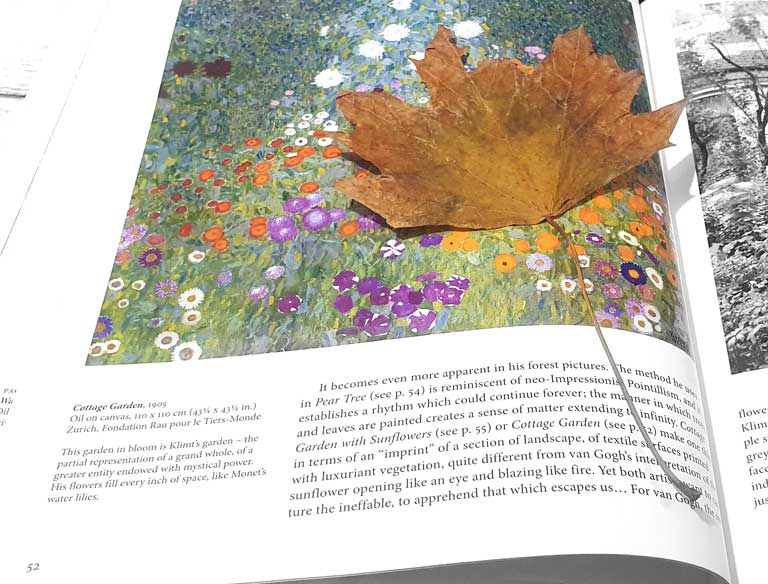
-
Newfound idol—Egon Schiele
When I first saw Schiele’s works at the Leopold Museum, I immediately fell in love, mostly because of the colour scheme that he used and the twisted body shapes and the expressive lines. There is one of his works (Cardinal and Nun) that I felt connected to Klimt. After reading the descriptions, it validated my suspicion. Later, I did some readings on the Internet and found out that he was the protégé of Klimt.

Cardinal and Nun (Caress), 1912. From the description beside the painting, it is believed that Schiele was paraphrasing Klimt’s The Kiss. Schiele was a major figurative painter of the early 20th century. His work is noted for its intensity and its raw se*uality, and the many self-portraits the artist produced, including na#ed self-portraits. The twisted body shapes and the expressive line that characterize Schiele’s paintings and drawings mark the artist as an early exponent of Expressionism. But na#ed aside, I am in it for the art. Below are some of his works that I love.
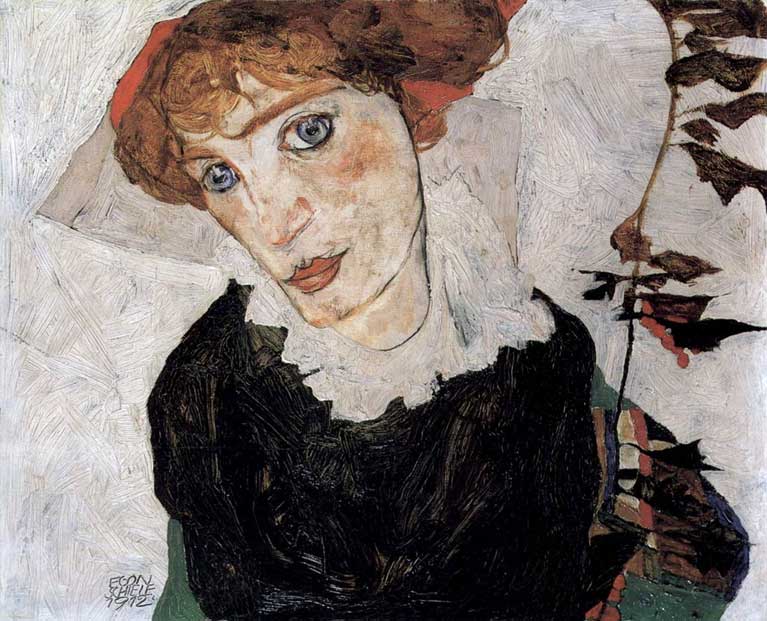
Portrait of Wally, 1912. 
Kneeling Female in Orange-Red Dress, 1910. I especially adore this one for the colours. Beautiful! Apart from female figurative, Egon also painted portraits of himself. His Self Portrait, 1910, was the very first work of his that I saw and immediately fell in love.
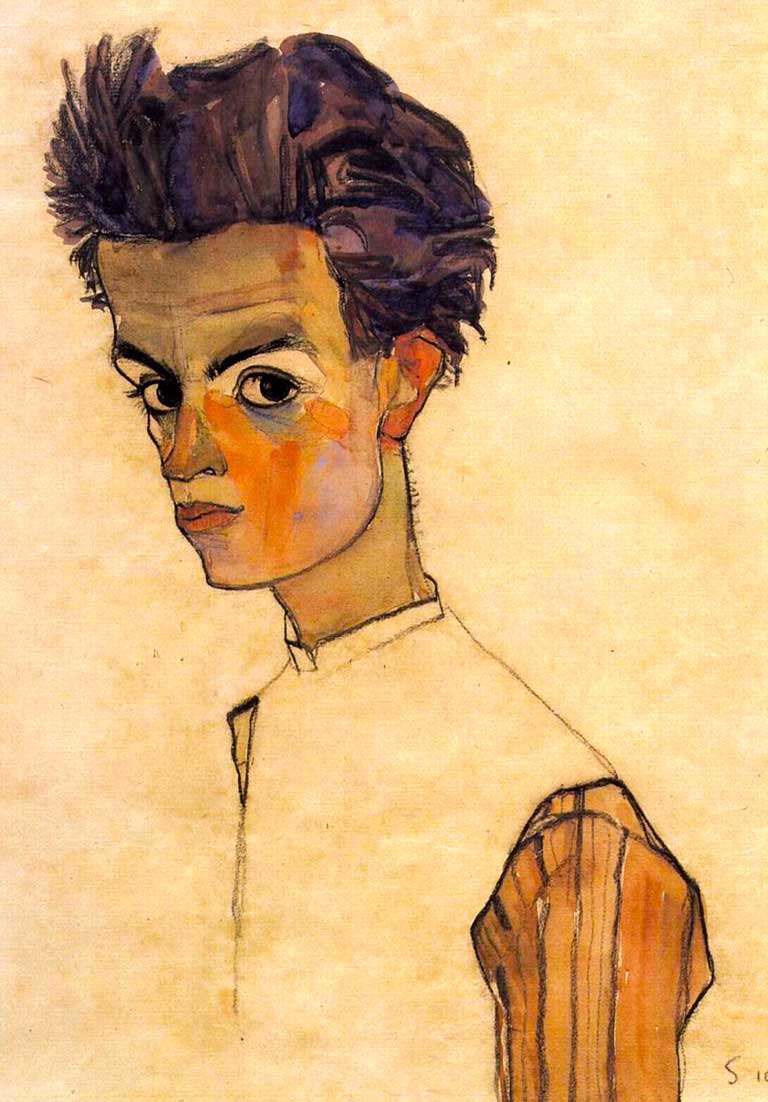
Self Portrait, 1910. Apart from figurative, Schiele also did some landscape paintings.
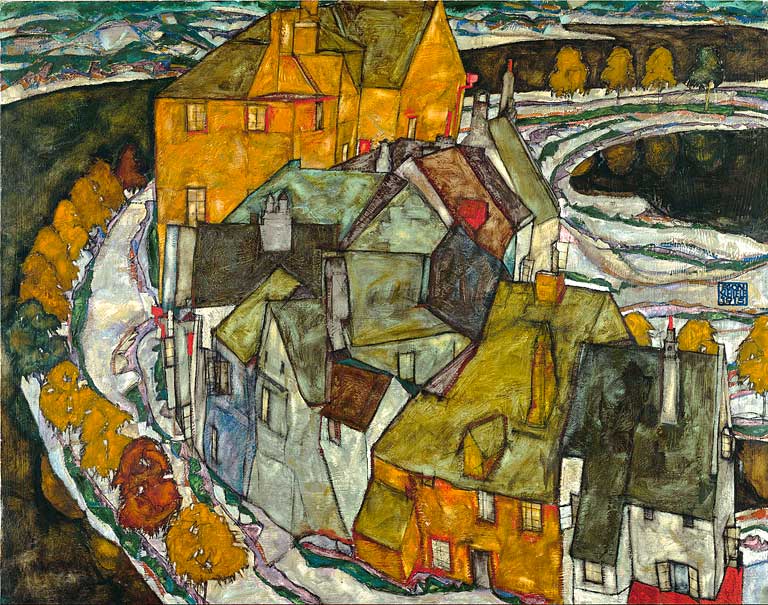
Crescent of houses II (Island Town), 1915. Egon Schiele (1890 – 1918) died young at the age 0f 28. In the autumn of 1918, the Spanish flu pandemic that claimed more than 20,000,000 lives in Europe reached Vienna. Hi wife, Edith Schiele, who was six months pregnant, succumbed to the disease on 28 October. Schiele died only three days after his wife.
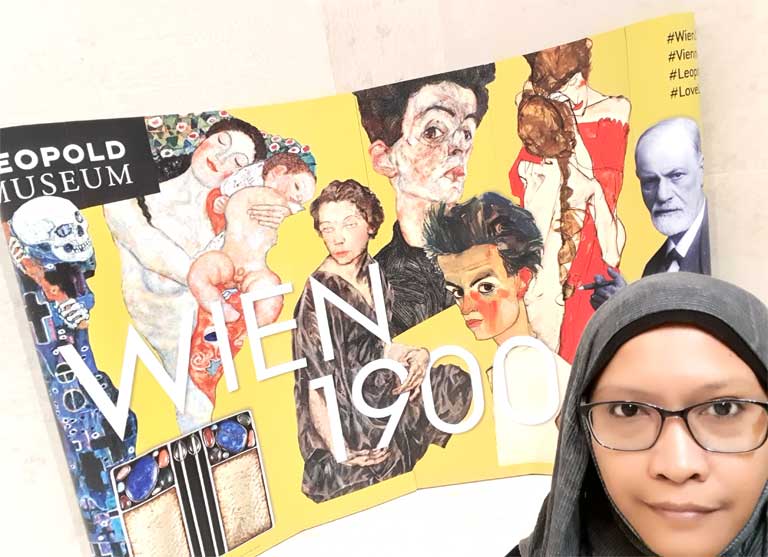
Me at Leopold Museum. 😛 -
On the trail of Gustav Klimt
I am not sure when was the first time I see Klimt’s works but one thing I know for sure, I quickly fell in love with his works. Seeing Klimt’s paintings from reference books and on the Internet at first seemed great, but over time, I had a dream to see them up close—to observe his brush strokes, to really ‘travel into’ his paintings. I made the dream a reality last Autumn (October 2019). It was the most inspiring art adventure that I braved alone. Yes, alone in Vienna. I thought I needed to appreciate his works at my own pace. It was worth it, I found it so inspiring. At times when observing his original masterpieces in the museums, I got all teary—I came so far; from only admiring from across the ocean to being able to stand in front of his paintings.
I visited five museums in total over the course of five days; well, it is not a complete trail, but that will do.
Kunsthistorisches Museum
The first museum I visited was Kunsthistorisches.
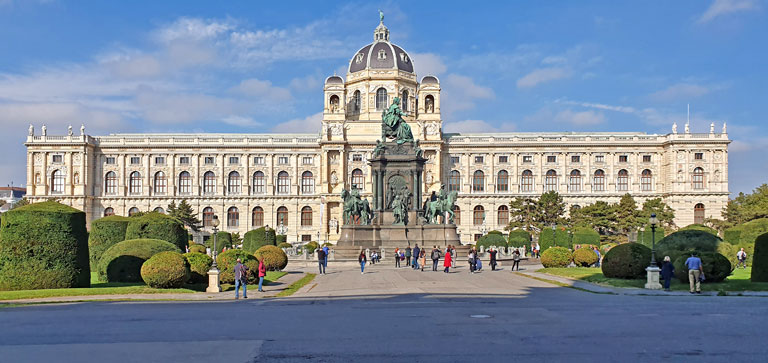
At Kunsthistorisches museum, Klimt paintings are in the form of fresco displayed twelve metres above the ground where they form an integral part of the sumptuous décor of the Main Staircase. There are 40 spandrel paintings and other decorative works adorn the narrow sections of wall between the arches and columns. Eleven of these were completed by Gustav Klimt, and the remainder by his brother Ernst and their friend, Franz Matsch. The paintings were commissioned by Emperor Franz Joseph.
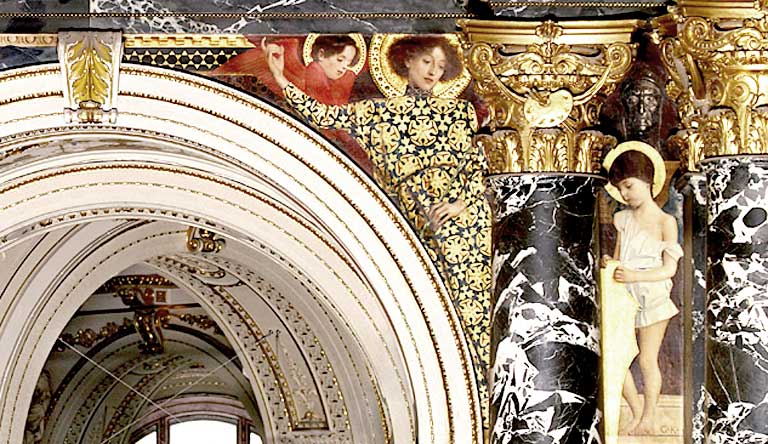
Albertina Museum

Nymphs (1899) With its Graphic Arts Collection—which, at one million works spanning the period between the Renaissance and the present, Albertina is one of the world’s largest and the world’s leading museum for the art of drawing and printing.
In Albertina, there is only one painting by Klimt, entitled Nymphs (1899). Nonetheless, I enjoyed visiting here because there is a permanent exhibition of works (drawings and paintings) by all of modern and contemporary art history’s great artists including Marc Chagall, Picasso, Edgar Degas, Paul Cezanne, and Albrecht Durer. Albertina is truly the home to all of the pioneering artistic ideas of the modern era and the present.
Leopold Museum
The Leopold Museum has a remarkable number of Klimt’s works and a large room dedicated to his genius, filled with his landscapes, portraits and other paintings. Among the paintings are Litzbergkeller on Lake Attersee (1916), On Lake Attersee (1900), Death and Life (1910/11, reworked 1915), The Blind Man (1896).
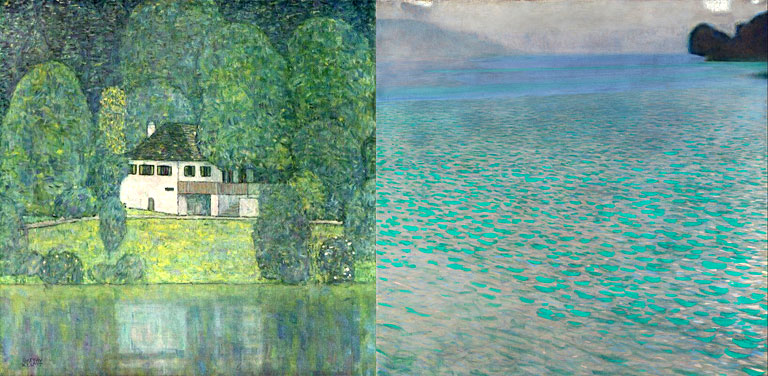
Left: Litzbergkeller on Lake Attersee (1916), right: On Lake Attersee (1900). 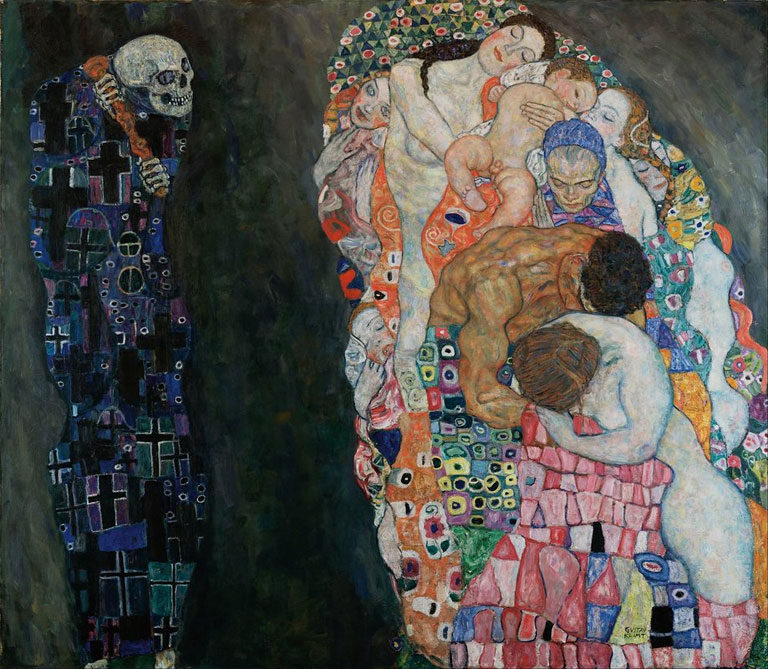
Death and Life (1910/11, reworked 1915). Klimt’s 1910 Death and Life is perhaps the outstanding work among many. Death and Life painting is based loosely on the dance of death depicted in medieval and renaissance times as death coming to visit people in all ranks and positions in society. Usually, death holds an hourglass or a scythe implying that everything has time to pass and be reaped off the earth. Unusually, Gustav Klimt’s Death and Life depicts death holding a club which looks much more dangerous, animalistic and menacing.
The skull of death is looking towards life eagerly, inching its neck out and head forward like a predator inspecting its prey. Life is depicted in an arrested cornucopia architecture of human bodies, like a column of flesh showing old and young, male and female alike. There is a sense of generation after generation of human beings who have been or will be taken by death.
Secession Museum
From Leopold, I walked to the Secession museum which is about fifteen minutes, and there it was his world-famous 1901 Beethoven Frieze. Klimt painted the Beethoven Frieze for the 14th Vienna Secessionist exhibition in celebration of the composer. Meant for the exhibition only, the frieze was painted directly on the walls with light materials. After the exhibition, the painting was preserved and now is on permanent display in the Vienna Secession Building in a specially built, climate-controlled basement room.
The frieze is large, standing at 7 feet high with a width of 112 feet. The entire work weighs four tons.

Partly the Beethoven Frieze (1901) on one side of the wall. Upper Belvedere Museum
Under Belvedere, there are three museums, I could not go to all so I chose the one that has more Klimt paintings on exhibition—the Upper Belvedere. The Upper Belvedere gave me the opportunity to see the biggest and most important collection of Klimt’s works worldwide, among them the famous picture “The Kiss”. It was so surreal! So grand and so beautiful!
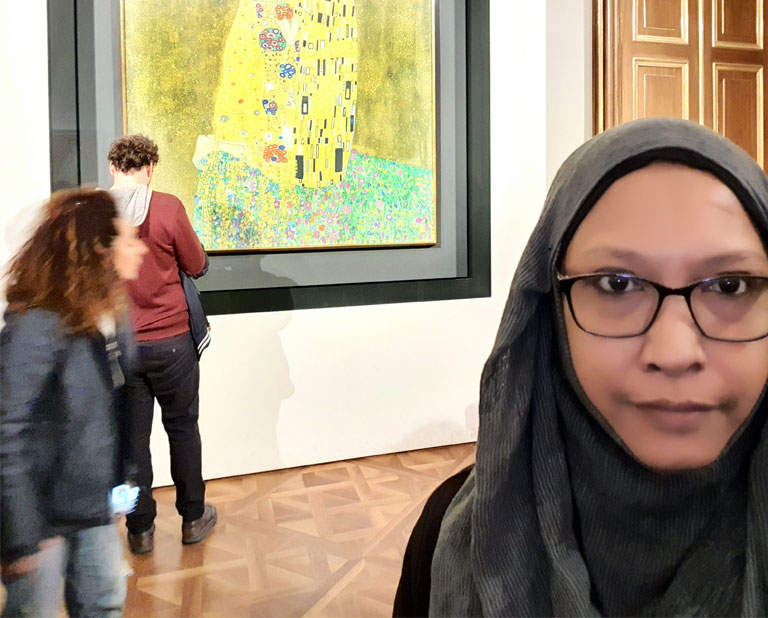
I was there! This area was especially crowded and no chance to take a selfie without people in the background. 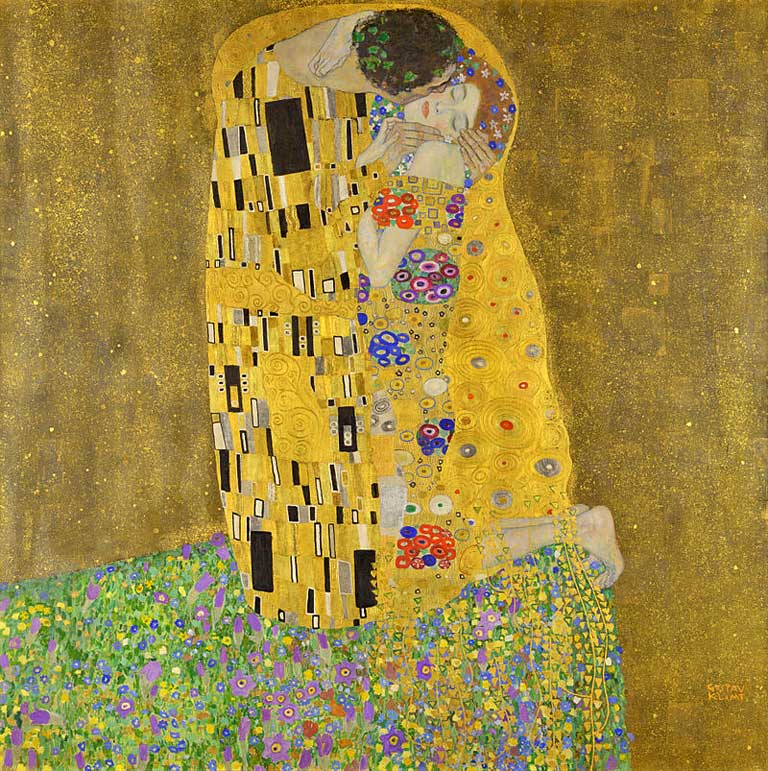
The Kiss (Lovers), 1907–1908. With a total of 24 works by Klimt, the Belvedere owns the biggest and most important collection of Klimt paintings in the world.
You know, I missed the Wien Museum, Klimt Villa and a few others but… I will be sure to come back again and continue where I left off. Bis später!